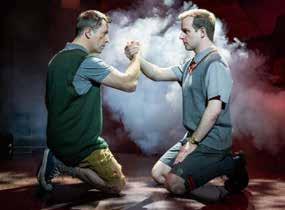
9 minute read
TRIPS
from Raven 2022
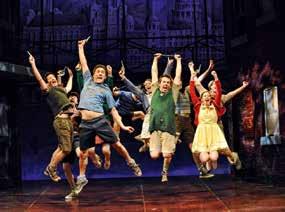
Blood Brothers As part of our development of the Drama Scholarship and Academic Drama programme this year, pupils were finally able to go back into the Theatre after two years.
On Saturday 12th March 2022, pupils watched Blood Brothers, a musical by playwright Willy Russell in the Theatre Royal Bath. Blood Brothers, revolves around twin boys (Mickey and Edward) who are separated at birth and brought up in completely different environments in the city. The play, set in the 1960s, is divided into two acts, with songs throughout.
For many of the pupils this was their first time going to the theatre with many of them mesmerised just at the building and infrastructure of the theatre itself. Then, when the play began with the lights, the set and the actors’, many were taken aback at how much thought and time goes into creating a great piece of drama.
When the play finished, there many positive comments with pupils exclaiming ‘that was so good’ and ‘I want to watch more theatre’. Some were confused at the meaning of the play, however, all pupils were able to discuss their interpretations and understand the magic and power of live theatre. Making it different to a film or even a recorded piece of theatre.
Bethany Ackerley Resident Graduate Assistant (Performing Arts) Haynes Motor Museum First and Second form trip I had lots of fun on the trip to Haynes Motor Museum in Somerset as I really love vintage cars and have always done so because my dad has a few. It was amazing when I saw a red Renault 1910 type ax which is a really rare car. There was also a 1963 Alfa Romeo 2600 spider. My favourite was the 1965 Shelby Cobra in a red colour. In addition, one of the cars I loved there was a Morgan 3-wheeler which I think was made around the 1930s. There was an MGA Roadster and a 1966 Ford GT which was driven and raced against Ferrari in 1966, this is what makes it so special! There were so many wonderful cars it is hard to write about all of them, but I think you get a flavour of the experience.
I enjoyed the trip with my buddies, and of course, my House Master, Mr Dolman who also loves vintage cars but not as much as me! I hope we go again next year…
First Form, Powell House
Holburne Museum: The Tudors: Passion, Power and Politics On the 26th April a History trip for the Lower Sixth and Upper Sixth A-Level Historians was organised to a remarkable exhibition of Tudor Portraits at the Holburne Museum, Bath. This was
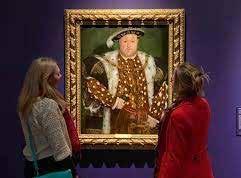
a unique collection of portraits of the monarchs and courtiers of the 16th Century from a number of different collections, and all assembled in one room. At the entrance to the room was a remarkable life cycle of a courtier called Henry Unton, a metre and a half in length. This gave a sense of the Century, but it was the characters that shone through the portraits, characters one already knew in some way, who came alive: two portraits of Henry VIII as a young and older man, three of his wives: Catherine of Aragon, Anne Boleyn and Jane Seymour, and the key players Thomas More, Thomas Cromwell and Thomas Cranmer, all next to each other. This was followed by the famous painting of succession of Edward VI, a small portrait of Mary Tudor and three magnificent portraits of Elizabeth at different periods: the Pelican portrait, Elizabeth as a young Queen and the Sidney portrait. There was also a damaged portrait of Lady Jane Grey, the pretender to the throne.
We were very fortunate to have Dr Sanders explain the meaning of these political portraits as well as the fashions that were on display within them. This exhibition really brought the period alive and gave some insight into the characters of these historical actors at a crucial period in English history. Utterly fascinating.
Hugh Walters Head of Theology & Head of History
Blenheim Palace Visit: Sixth Form Art History & Art study day On Wednesday 19th October, Sixth Form History of Art and Art pupils enjoyed a study day in Oxford. The morning was spent at Blenheim Palace analysing the beautiful architecture – the compositions of the facades, the remarkable Baroque decorative features, and the lavish interiors. Built 1705-22, Blenheim Palace was designed by Sir John Vanbrugh and Nicholas Hawksmoor. With 187 rooms, it is the only non-royal, non-Episcopal house in England to hold the title of palace. It was gifted by Queen Anne to the Duke of Marlborough for his military accomplishments during the Spanish War of Succession, but the build was beset with numerous squabbles over politics, religion, and money. The estate covers 2100 acres and incorporates some of Capability Brown’s best work. We also visited the Ashmolean Museum to view their eclectic collection of art and artefacts. Our main focus was the 19th and 20th century art. Mrs William’s Art pupils paid particular attention to the portraiture collection. The Art History pupils found
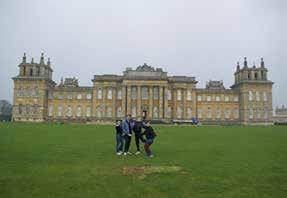
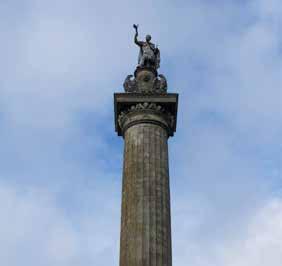
works by Rodin, Renoir, and Kandinsky to feed their knowledge. In total, a productive and enjoyable day for all.
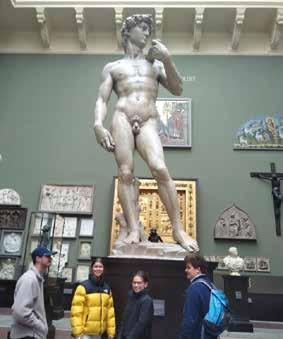
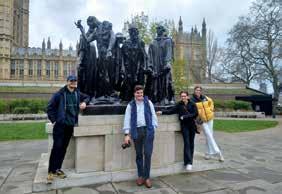
Rachel Saunders Teacher of History of Art
London Museum visits: Upper Sixth History of Art revision trip The Upper Sixth History of Art pupils showed true dedication to their exam revision by spending the first two days of their Easter holiday in London’s museums viewing and discussing the many artworks they have studied on the Pre-U course. First came the National Gallery to view important paintings including Holbein’s The Ambassadors (1533), Titian’s Diana and Actaeon (1556), Constable’s Hay Wain (1821) and Seurat’s Bathers at Asnières (1884). We were also lucky enough to see Gainsborough’s famous Blue Boy (1770) on loan from America. We then walked across Whitehall to the garden of the Houses of Parliament to view Rodin’s Burghers of Calais (1884-95), an emotive public sculpture that commemorate personal sacrifice in the face of tyranny, then along the Thames to Tate Britain to view Francis Bacon’s powerful, but disturbing Three Studies for Figures at the Base of a Crucifixion (1944).
Day two was spent discussing the many themes of the course, including Neo-Classicism, Post-
Impressionism, Expressionism, modernity, and gender politics. We were able to do this in front of great artworks, such as Canova’s Three Graces (1814) at the V & A, the Elgin marbles at the British Museum and van Gogh’s Self-Portrait with Bandaged Ear (1889) at the recently refurbished Courtauld Gallery. There is no substitute for seeing the artworks up close – it brings the course content to life, and it instils appreciation for the artists’ vision, intellect, skill, and labour. The museum visits were a wonderful opportunity to reflect on two years of study and invigorate minds in readiness for the exams.
Rachel Saunders Teacher of History of Art
Religious Studies – The Prince of Egypt After the First and Second Form trip to the theatre in November, we were all saying (or singing!) ‘Deliver us’ to London to see The Prince of Egypt again…
In the Lent Term of their First Form year, pupils are introduced to the Moses story in the Book of Exodus in their Religious Studies lessons. To support this part of the syllabus, the Religious Studies department took the First and Second Form pupils to see The Prince of Egypt in the Michaelmas Term. From the spectacular set to the immersive dancing and impressive singing, it was an experience to treat the senses and was enjoyed by all. Here are a few reflections from the pupils who came.
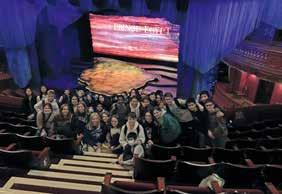
‘When the back of the stage lifted and all the actors fell into the orchestra pit it was really cool’ (Viva, First Form)
‘I loved when there was a ring of fire around the stage. The show was so fun and amazing’ (Emma, First Form)
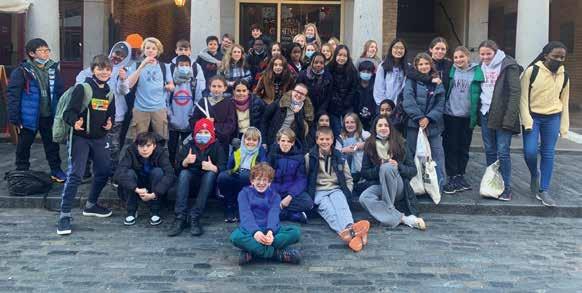
‘I thought that the use of physical theatre made it a lot more interesting, it made it easier to understand the surroundings and scenery. The play was really good and easy to follow, the singing was also amazing.’ (Boo, Second Form)
Jennifer Price Assistant HsM (Caverel) & Teacher of Religious Studies & History
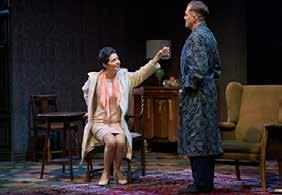
The Homecoming This year, around 30 pupils, on Thursday 31st March 2022 were able to go and be puzzled and astonished by The Homecoming by Harold Pinter, directed by Jamie Glover at the Theatre Royal Bath.
Harold Pinter’s 1960s masterpiece is widely regarded as his finest play. This bleakly funny exploration of family and relationships has become a modern classic and winner of the Tony Award for Best New Play. This was a great opportunity for prospective GCSE and A-Level Drama pupils to watch a very different style of theatre and start to engage and explore practitioners and their use of techniques to show themes, relationship and social context. The show had a great cast with some very strong actors including, Star of BBC’s Gavin & Stacey, Mathew Horne (Agatha Raisin, Bad Education, Newark Newark). However, Mathew Horne was unwell with Covid-19 the night of the show, so his understudy took to the stage. This was done very well and showed pupils that, even when reading a script, you can still act with conviction. Versatile actor, comedian, and musician Keith Allen (The Young Ones, The Pembrokeshire Murders, Pinter 3 in the West End) played the brutal patriarch, Max. Four-time Olivier Award nominee Ian Bartholomew (Into the Woods, Radio Times, Mrs Henderson Presents, Half a Sixpence, Coronation Street), played Sam. Teddy was played by Sam Alexander whose recent TV includes Rhys in Emmerdale, and on stage The Watsons (Chichester Festival Theatre), Lady in the Van and Racing Demon (both Theatre Royal Bath). RSC regular Geoffrey Lumb, recently seen in the West End in Hilary Mantel’s The Mirror and The Light, played Joey. Shanaya Rafaat (Around the World in 80 Days at the St James Theatre and Great Expectations at the West Yorkshire Playhouse) played Ruth.
The Times stated, “Half a century after it put Harold Pinter at the forefront of British drama, The Homecoming can still leave audiences so provoked, puzzled and pleased”. This statement was very true, as most of the pupils left the theatre thinking about what had happened and why it had happened. Overall, it was a very successful trip with pupils realising there is more to theatre than just musicals or conventional plays.
Bethany Ackerly Resident Graduate Assistant (Performing Arts)







